As the fields turn golden and the granaries overflow, every corner of India dons the Harvest Festival spirit, celebrating the bounties of nature in its unique way.
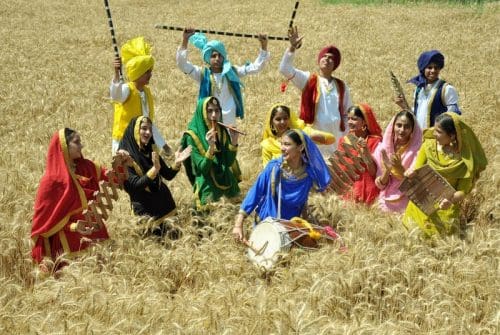
From the high-flying kites of Makar Sankranti to the rhythmic dances of Bihu, from the sweet offerings of Pongal to the warm bonfires of Lohri, each festival weaves its own story of gratitude, joy, and community. Welcome to the Harvest Festival echoing India’s age-old love affair with its agricultural roots and cultural splendor.
India’s Harvest Festival is a time of abundance and bounty, where every beat of the drum and every morsel of the feast tells a tale of the land’s rich heritage and enduring traditions. These are vibrant celebrations featuring regional lore, folk music, and most importantly, sumptuous food. This festival is known by various names across India, such as Makar Sankranti, Thai Pongal, Uttarayana, Lohri, and Magh Bihu, each marked by lavish spreads of regional dishes and festive activities.
In Assam, the Bihu Dance is a notable part of the festivities. The festival, at its core, is about celebrating the harvest with traditional lore, dances, music, and a focus on delicious, heartwarming food.
The Harvest Festival in India, encompassing various regional celebrations, is deeply rooted in cultural traditions and rituals. Here’s an expanded look at the cultural significance and traditional rituals of four major regional harvest festivals:
Makar Sankranti:
Cultural Significance: Celebrated across India, Makar Sankranti marks the transition of the sun into the zodiac sign of Makara (Capricorn), signifying the end of winter and the arrival of longer days. It is a festival of thanksgiving for the harvest and a time of joy and renewal.
Traditional Rituals: The festival is celebrated with kite flying, symbolizing the spirit of freedom and joy. People prepare and share sweets made of sesame and jaggery, symbolizing harmony and peace. Bonfires and folk dances are common, with communities coming together to celebrate. It’s also a time for spiritual practices, with many taking holy dips in rivers, believing it washes away sins.
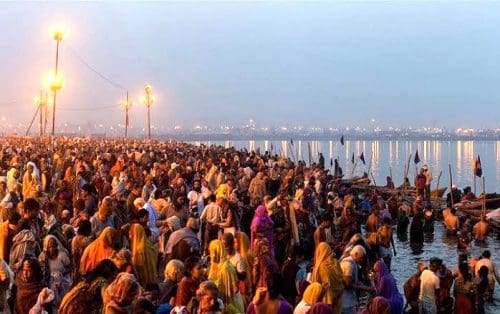
Pongal in Tamil Nadu:
Cultural Significance: Pongal is a four-day festival that marks the beginning of the Tamil month of Thai, heralding the end of the traditional farming season. It’s a time for giving thanks to nature, the sun, and the farm animals for providing the necessary resources for a successful harvest.
Traditional Rituals: The first day, Bhogi Pongal, involves discarding old belongings and welcoming new possessions. The second day, Surya Pongal, is when the Pongal dish is cooked outdoors in a clay pot as an offering to the sun god. The third day, Mattu Pongal, is dedicated to cattle, with cows and bulls being adorned and worshipped. The final day, Kaanum Pongal is for family reunions and outings.
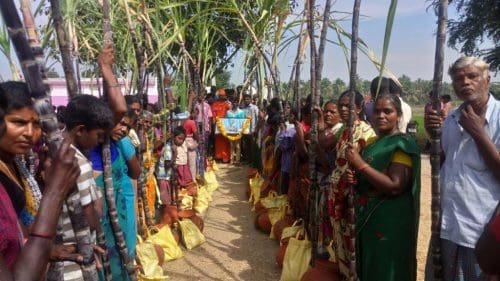
Magh Bihu in Assam:
Cultural Significance: Celebrated in January, Magh Bihu marks the end of the harvest season in Assam. It’s a festival of feasting and merrymaking, reflecting gratitude for a bountiful harvest. Magh Bihu is a time for community bonding and showcases the rich culture and traditions of Assam.
Traditional Rituals: The eve of Magh Bihu, called Uruka, involves community feasts where people gather around bonfires, cook meals, and share stories. On the day of Bihu, traditional Assamese food like Pitha (rice cakes) and Larus (coconut sweets) are prepared. Games such as buffalo fighting and bird fighting are traditional. There’s also the ritual of burning the Meji, a hut made of bamboo and leaves, symbolizing the discarding of the old and welcoming the new.
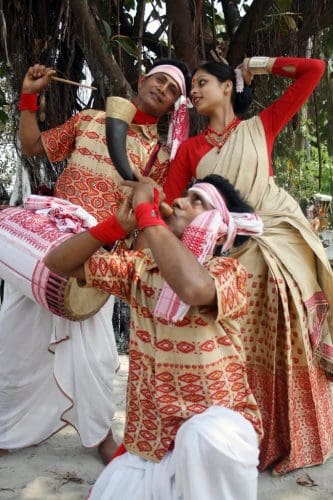
Lohri in Northern India:
Cultural Significance: Predominantly celebrated by Sikhs and Hindus in Punjab, Lohri marks the end of winter and is a celebration of the winter solstice. It’s associated with the harvest of rabi crops and is a way of showing gratitude to the natural elements, particularly fire and the sun.
Traditional Rituals: The central ritual of Lohri is the bonfire, which is symbolic of the sun’s energy. People gather around the fire, throw sweets, puffed rice, and popcorn into the flames, sing folk songs, and dance. This is followed by a feast of traditional Punjabi dishes. It’s also a special time for new brides and newborns in families, who receive particular attention and gifts.
Each of these festivals, through their unique customs and rituals, reinforces the community spirit, celebrates the natural cycles of agriculture, and preserves age-old cultural practices, making them integral to the cultural fabric of India.
Regional Culinary Celebrations
The Harvest Festivals of India is not only a celebration of agricultural bounty but also a spectacular showcase of regional cuisines, each with its unique flavours and traditional dishes. Here’s a glimpse into the diverse culinary landscape of these festivals:
Makar Sankranti Delicacies:
Across various parts of India, Makar Sankranti is celebrated with an array of sweet treats. Key among them are ‘Til Laddus’ (sesame seed balls) and ‘Chikki’ made with jaggery and peanuts or sesame seeds. These sweets, embodying the flavours of winter, are shared among friends and family as a symbol of goodwill.
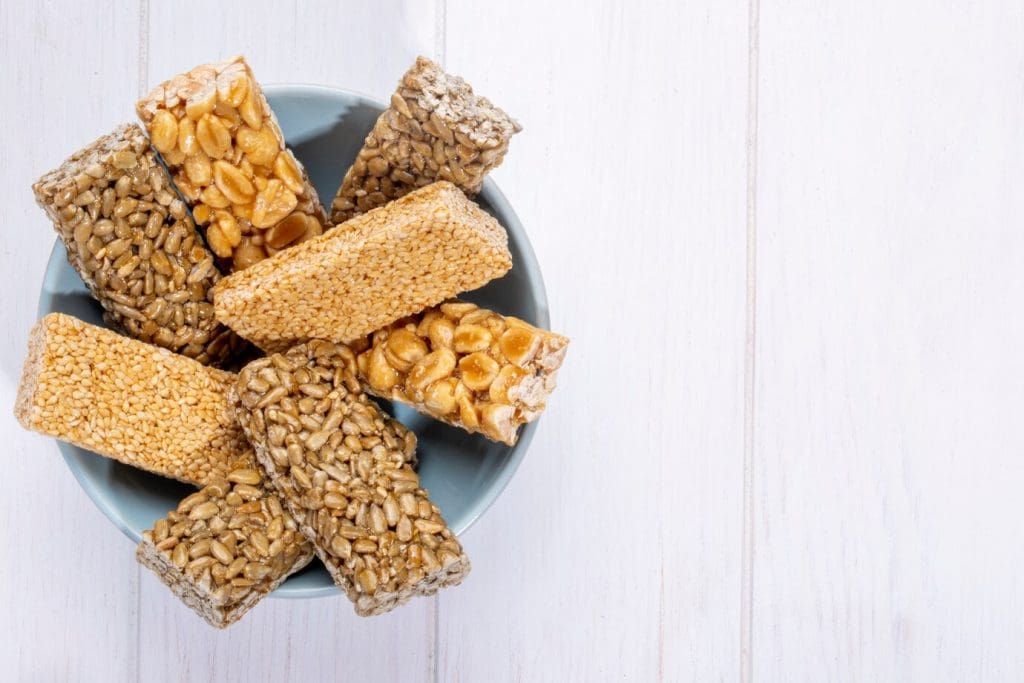
In states like Gujarat and Maharashtra, people prepare a special mixture of jaggery, sesame seeds, and flattened rice or puffed rice, which is distributed as a token of goodwill.
In South India, Pongal, a sweet rice dish made with jaggery, milk, and green gram, is prepared, symbolizing abundance and prosperity.
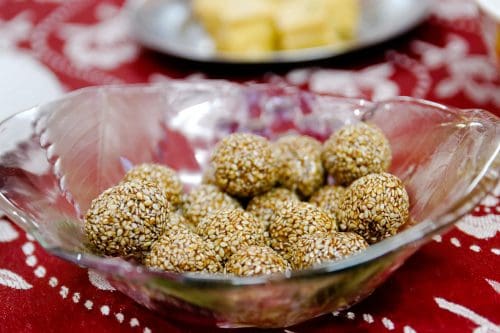
Tamil Nadu’s Pongal Feast:
The highlight of the Pongal festival is the dish after which the festival is named. ‘Pongal’ is a sweet rice pudding made with newly harvested rice, milk, jaggery, and cardamoms, often garnished with cashews and raisins. ‘Ven Pongal’, a savoury version made with rice, moong dal (split yellow lentils), ghee, cumin, and pepper, is another essential dish served during the festival.
Accompaniments like ‘Sambar’ and ‘Rasam’ along with ‘Medu Vada’ (savoury fried lentil doughnuts) and ‘Chutney’ make for a complete festive meal.
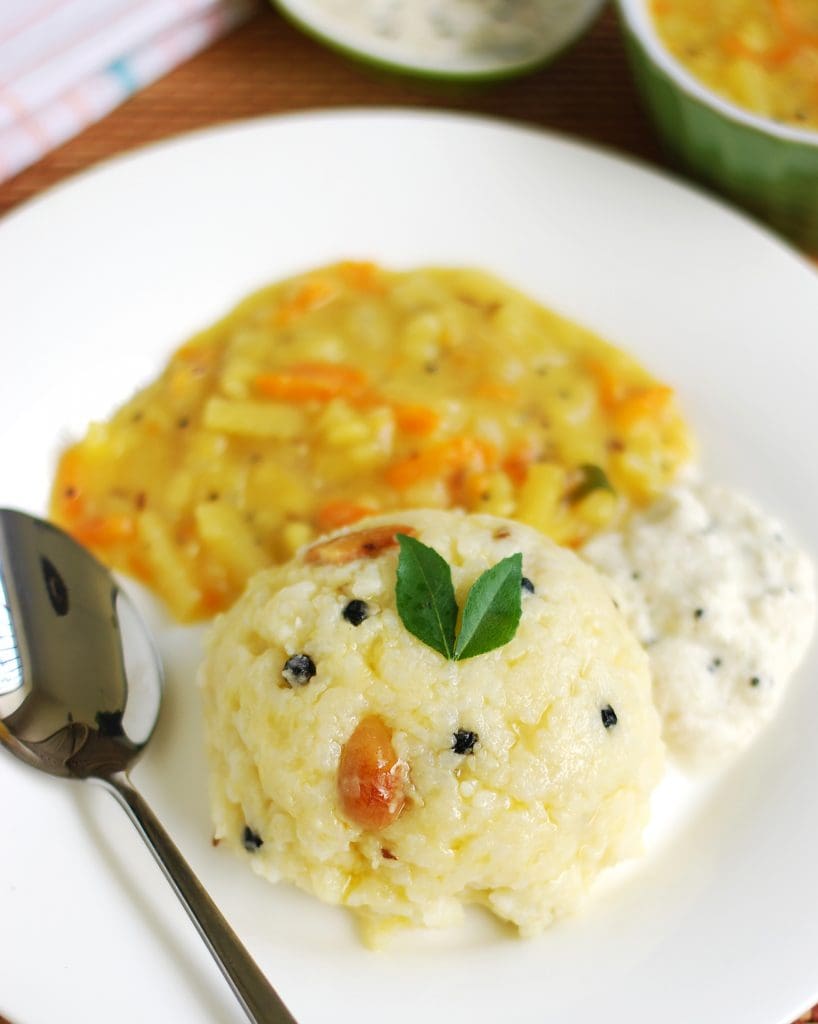
Assam’s Magh Bihu Feast:
Magh Bihu in Assam is synonymous with community feasts known as ‘Bhogali Bihu’. The feast includes an assortment of traditional Assamese food such as ‘Pitha’ (rice cakes), ‘Laru’ (coconut sweets), and ‘Jolpan’ (various rice-based snacks). Fish delicacies are also a significant part of the feast, with fish being an integral part of Assamese cuisine.
The traditional ‘Meji’ (bonfire) is surrounded by people enjoying ‘Doi’ (yoghurt), ‘Chira’ (flattened rice), and ‘Gur’ (jaggery), symbolizing communal harmony and joy.
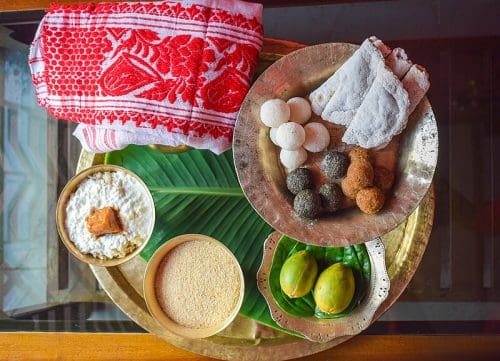
Lohri’s Winter Treats in Northern India:
The Punjabi festival of Lohri is celebrated with a variety of winter foods. The star of the festival is ‘Makki di Roti’ (cornbread) and ‘Sarson da Saag’ (mustard greens curry). Sweet dishes like ‘Gajak’ (sesame and jaggery brittle), ‘Rewri’ (sesame seeds coated with jaggery), and ‘Peanut Chikki’ are widely enjoyed during the festival. The bonfire on Lohri night sees the tradition of throwing sesame seeds, jaggery, and popcorn into the fire, symbolizing prayers for abundance and prosperity.
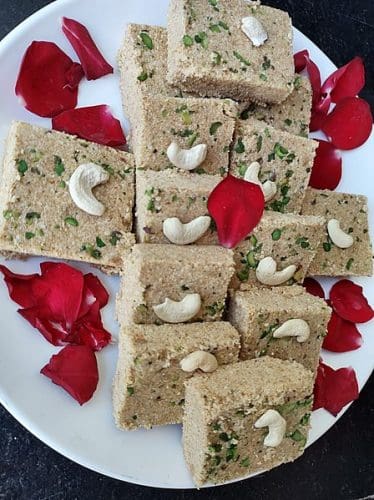
While each festival stands out with its distinct customs and gastronomic specialities, they all resonate with the common theme of rejoicing in the harvest and the pleasure of community togetherness. These celebrations are a vibrant reflection of India’s vast cultural mosaic, showcasing how food and festivities can bring people together, transcending regional differences.
Read more: Latest



